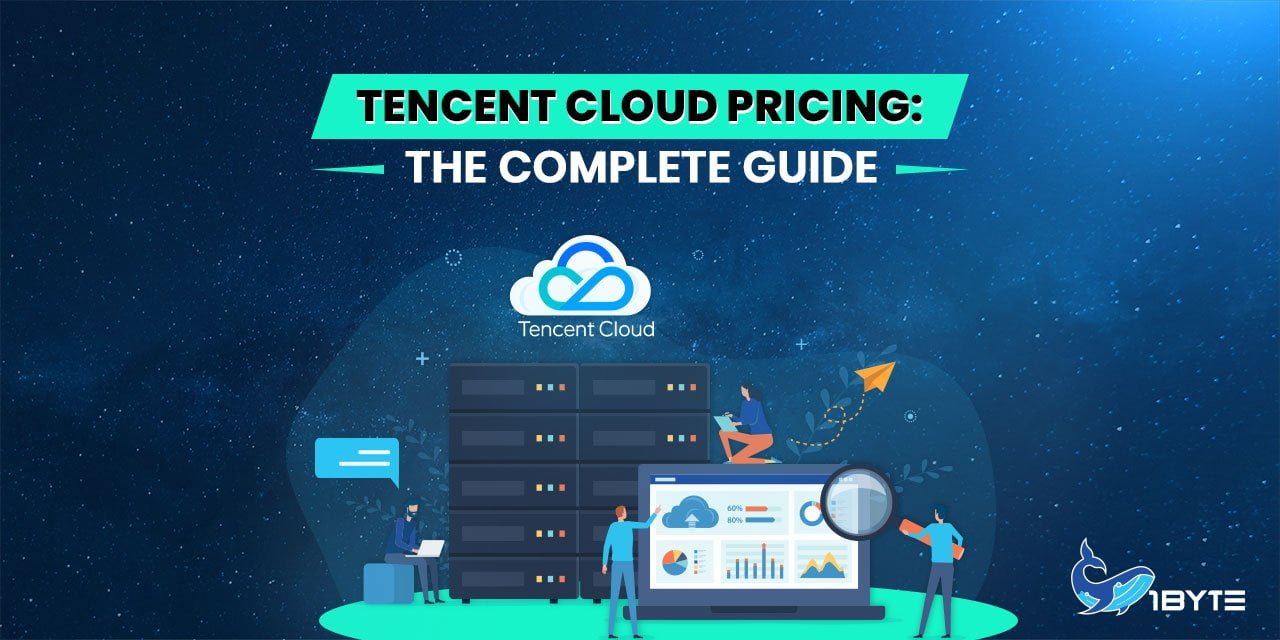Moving business operations to the cloud is a must for any company that wants to do business there. For a business to be successful, it needs the right cloud technology partner. Tencent Cloud is one of them. The pricing packages that Tencent Cloud offers for their services make them an attractive provider for anyone.
In this article, we’ll go into great detail about how they started, how they’ve changed over time, and what benefits they have to offer in terms of cloud computing solutions.
What is Tencent Cloud?
Tencent Cloud and the manner in which it prices its goods and services can only be comprehended after first gaining an understanding of the fundamentals around which the firm is built. Hence, in the first part of this section, we will delve into the foundations of the brand.
The Foundations
Tencent made the platform for cloud computing known as Tencent Cloud. Tencent could assure this due to their staff’s strong technological skills and a lot of real-world experience, which it used and is continually using to help different industries become more digital. It offers leading cloud computing, big data, and artificial intelligence services to millions of businesses and developers around the world. It also offers customized industry solutions.
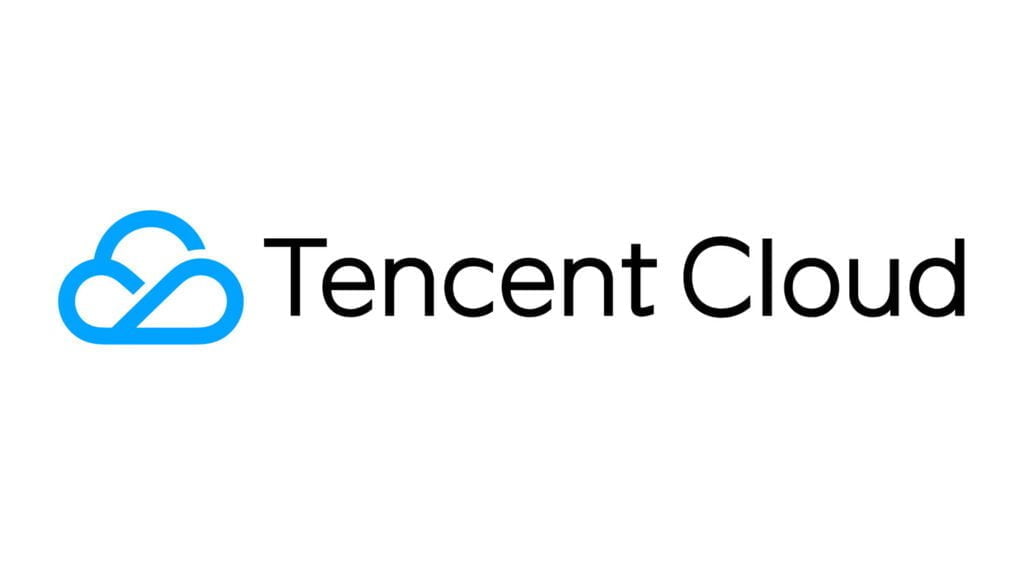
Between 1999 and 2010, Tencent Cloud grew internally as Tencent grew. These were its formative years. Due to the meteoric rise of its instant messaging service, QQ, Tencent gained a lot of knowledge and experience in large-scale system development and operation during this time. From 2010 to 2013, Tencent Cloud was in its early stages. In 2010, Tencent let the first group of apps use its platform. The next year, Tencent Cloud started offering Cloud services to customers outside of the company.
2013 was the company’s most significant year. In 2013, Tencent Cloud became available to everyone, and the next year, Tencent Cloud computing started. Tencent announced their ambitious plan to build an ecosystem worth 10 billion RMB by 2015. Since 2018, Tencent Cloud’s growth has been very fast, and this is still happening now.
The Reach
Tencent Cloud does business all over the world in 58 availability zones in over 27 different places. It has more than a thousand cache nodes in more than thirty countries and regions outside of Mainland China. It has more than a thousand cache nodes inside of Mainland China. Acceleration nodes are spread across the network to distribute content, and the Tencent cloud global scheduling system sends user requests to the closest optimal node in an accurate way, which reduces access latency.
Tencent’s influence is now clear worldwide, and it is growing very quickly. It is very well supported by its content delivery network, which has more than 2,800 global acceleration nodes spread across more than 70 countries and regions and a combined bandwidth of more than 200 terabits per second.
The Competitive Advantages
There are many things about Tencent Cloud that make their pricing justified. Tencent Cloud offers a wide range of services, such as hundreds of Cloud products and solutions, as well as continual research for new technologies and solutions. This means that you can find anything you need with regards to cloud solutions within one single brand. Not only the quantity, but the quality is also ensured with Tencent Cloud. The company has a lot of real-world experience from years of working with big apps like QQ, WeChat, and WeChat Pay to build and run them.
What’s more, the company’s strengths lie in the performance of cloud hosts and databases. This makes it all the more attractive to international businesses who seek to outsource overseas. Tencent Cloud also makes a lot of positive changes to KVM, for example, the 40 patches it contributed to the KVM kernel in 2018. Finally, Tencent Cloud uses economies of scale to offer customers low prices to buy, low prices to run, and services that are good value for money.
What Features Does Tencent Cloud Have?
As implied in the previous section, Tencent Cloud has a lot of advantages over its competitors. In this section, we’ll go into more detail about their specific features so that you can better understand their strengths before deciding whether or not to work with them.
1. Ease of Use
Because usability is such an important issue in technology, many companies are putting all of their efforts into making their products as easy to use as possible. Tencent Cloud does an excellent job in this area. Working with Tencent Cloud gives you access to a web-based interface that you can use as a console to do many things like restart the system, change the settings, and reinstall the operating system on any physical or virtual machines.
2. Speed
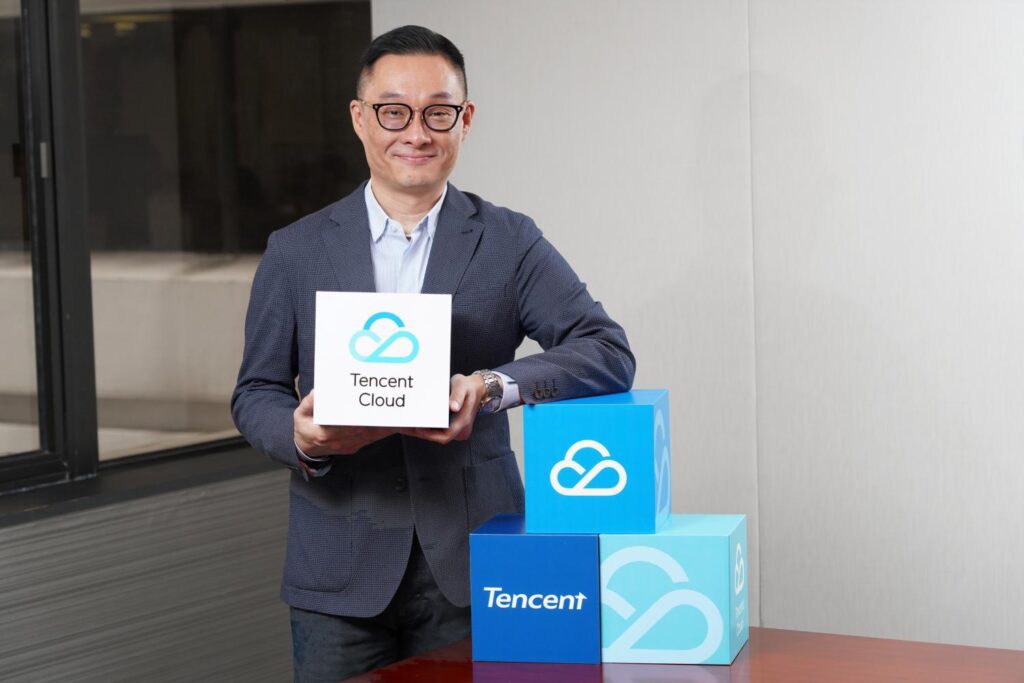
Tencent Cloud possesses exceptional levels of performance. BGP public network with more than 20 lines almost covers all ISPs, offering top speed private data centers in the same region, all of which are interconnected to ensure high quality in communication in private networks. The company also supports rapid and convenient deployment of thousands of server instances in minutes, as well as the purchasing, configuring, managing, or expansion of services with a single click.
3. Reliability
Tencent Cloud ensures that their services are available 99.95% of the time and that data is reliable between 99.99% and 99.999999% of the time, with coverage around the globe. This availability includes things like invisible migration, data snapshots, and automatic alerts to keep servers safe, multiple copies of user data to get rid of a single point of failure, and sophisticated network virtualization technology and ENI binding to make network delivery very reliable.
4. Flexibility
Tencent Cloud offers a flexible cloud service management platform with features like instant hardware upgrades and downgrades, storage expansion, bandwidth upgrades and downgrades. In addition, you can also switch between Windows and Linux operating systems at any time (currently only in Mainland China), along with having support for Public and custom images, cross-region adjustments, image duplication, and Virtual Private cloud networks with their own network space, custom IP address ranges, IP Addresses, and IP Addresses.
A Breakdown of Tencent Cloud Pricing Packages
Working with Tencent Cloud, which is a very large cloud company, can seem scary at times because there are so many new things to learn in order to understand everything the company has to offer. The good news is that 1Byte is here to help you in any way we can! In the next few paragraphs, we’ll talk about Tencent Cloud’s pricing structures and package options, as well as what you can expect from them.
3 Pricing Models of Tencent Cloud
How do you pay for Tencent Cloud? It’s a question many surely ponder before working with them. Let’s find out.
1. Pay-As-You-Go Billing
This is a flexible pricing model that enables you to pick and choose services based on your budget. It lets you plan your cloud strategy in real-time. For this model, you won’t have to pay the full price upfront because you’ll only pay for what you use. You can purchase and cancel at any time, and the configuration is always available to meet the needs of the business.
2. Subscriptions
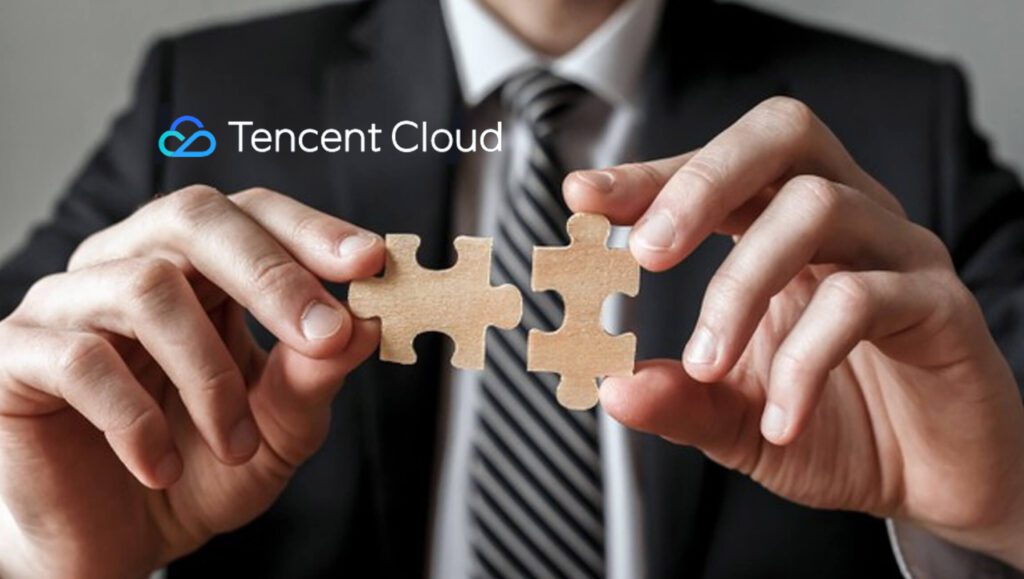
The subscription model lets you choose between an annual plan and a monthly plan. This model helps reduce risks by reserving enough resources after advance payments. It can help you manage budgets more reliably. In addition, customers who subscribe can enjoy substantial discounts available at times.
3. Tiered Pricing
When you use a tiered pricing strategy, the more customers you serve and the larger your company is, the greater the amount of money you save. Furthermore, the more you use it, the cheaper the rates become and the higher the discounts you receive. This is the pricing plan Tencent Cloud provides to assist you in making financial savings when working with them.
Tencent Cloud Pricing for Their Products & Services
Tencent Cloud’s pricing packages for their products are flexible and varied, which can be tough to comprehend at first. Luckily, we have just the summary of that kind of complexities for our readers! For the purpose of comprehension, we will only talk about the pricing packages for the most notable services of Tencent Cloud. Use the following only for reference; for the specific price, take note to go to their main website.
1. Compute & Container
Cloud Virtual Machine
Customers can buy a CVM instance from Tencent Cloud in one of three ways: pay-as-you-go, spot instance, or reserved instance. Each one’s purpose is to serve a different kind of client.
Pay-as-you-go is a flexible method of billing suitable for CVM instances. Any time you want, you can turn on or turn off a CVM instance. You only have to pay for what you use, and you don’t have to pay anything upfront at any time. Billing for resources that you pay for as you use them will be done by the hour. This pricing plan works well for situations where the business’s demand is highly variable.
With the help of spot instances, you can now use and pay for CVM instances. It works in a way that is similar to “pay as you go,” and you can choose to be billed by the second or by the hour. Because the prices of spot instances change based on market demand, you will get a big discount (about 80–90% off the prices of pay-as-you-go instances with the same specifications). Spot instances, on the other hand, could be automatically taken back by the system if there aren’t enough of them or if other users place higher bids.
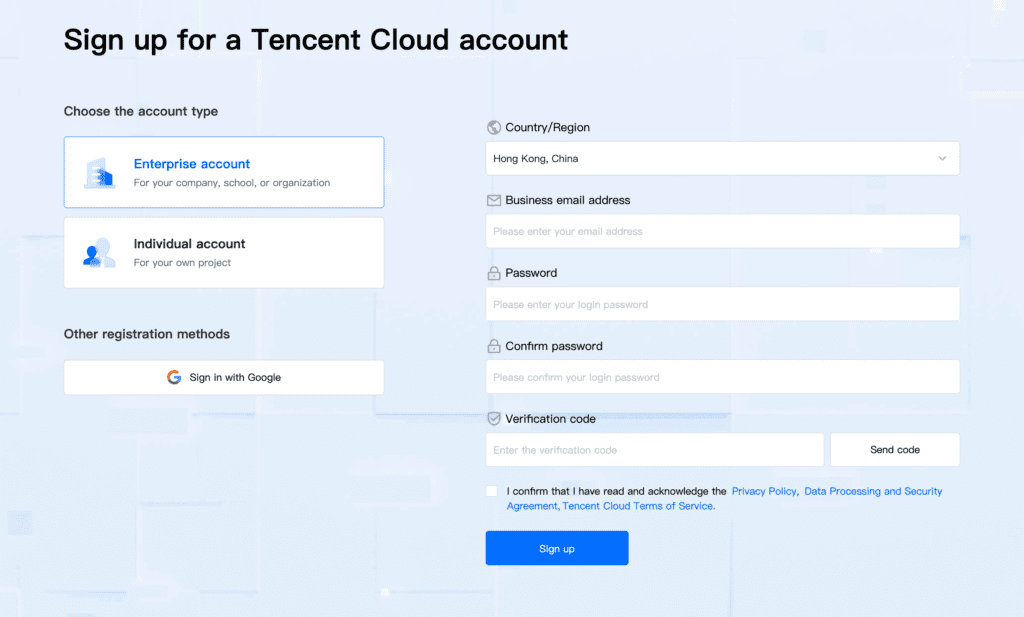
The last one, called “reserved instance (RI) billing mode,” is a prepayment method that is thought to be better. It is a bill discount for a pay-as-you-go physical instance, but there is no actual physical instance, so it is also pay-as-you-go. For the pay-as-you-go instances to get the billing discount that is available during the RI term, they have to match the RI criteria exactly.
Auto Scaling
The service of Auto Scaling doesn’t cost anything. You will have to pay for extra services that go along with Auto Scaling, though. Some examples of these extra services are CVM instances as mentioned above, which are added by Auto Scaling automatically or manually.
Batch Compute
In a way similar to Auto Scaling, the Batch service does not cost anything by itself. However, you will have to pay for other services that can come with the Batch Compute platform. When a job is scheduled, Batch will create CVM instances based on the settings that the user has chosen. For the new CVM instances, billing will count after the fact.
CVM Dedicated Host
With CVM Dedicated Host (CDH), you can create CDH instances either in console or using API, which are charged accordingly with the pay-as-you-go structures.
Cloud Load Balance
The CLB cost involves the following four parts: instance fee, public network fee, cross-region binding fee and LCU (Loadbalancer Capacity Unit) fee. This breaks down public and private network instance types.
For public networks, there are two account types: Bill-by-IP account and Bill-by-CVM account. Bill-by-IP account generates an instance fee, public network fee, cross-region binding fee and LCU fee, while bill-by-CVM generates only instance fee and LCU fee, similar to all accounts on the private network.
2. Storage
Cloud Object Storage
Pay-as-you-go billing is used for Cloud Object Storage. This means that you use the resources first and then pay for them later. Fees for a wide range of billable items are calculated, settled, subtracted, and invoiced every day. In COS, things that can be billed are storage usage, requests, data retrieval, traffic, and management functions.
Cloud Block Storage
Tencent Cloud’s pricing packages include both a monthly subscription and a pay-as-you-go option for cloud disk billing. This lets the company meet the needs of a wide range of customers. The price changes based on where you live and what kind of disk you want.
Cloud File Storage
The cost of using CFS is directly related to how much storage space is used. By default, a new file system will use 32 megabytes of free storage space. The CFS can be billed by using the pay-as-you-go mode or by buying a resource pack, which can be used to reduce the amount of hourly storage space that is taken from your account according to the pay-as-you-go rules.
Cloud Log Service
Cloud Log Service (CLS) gives you the option of pay-as-you-go (postpaid) billing, which you can choose based on what your business needs.
3. Security
Web Application Firewall
Right now, you can get WAF as either a SaaS WAF or a CLB WAF instance, and each has its own plan. The WAF uses a billing system consisting of a basic plan and extra packs or features that add value.
When you buy the required basic plan, you can choose to pay for it in advance. After buying the basic plan, you can upgrade the instance’s specs by buying more domain packs, business packs, or QPS packs.
Data Security Center
When it comes to this product, you should buy the service for at least three data assets. The number of assets that can be supported can be increased based on your needs. Tencent Cloud’s pricing for this service starts at $40 USD per month for each piece of data.
Anti-DDoS

Anti-DDoS Advanced has both a monthly subscription and a pay-as-you-go option for its customers. To be more specific, base protection bandwidth, application bandwidth, and forwarding rules are all billed every month. On the other hand, elastic protection bandwidth and application bandwidth that go over the plan are billed on a daily basis.
Anti-DDoS Pro’s pricing is not the same. By default, when you start a new instance of Anti-DDoS Pro, it will protect company IP addresses in the same region. You can increase the number of IP addresses that will be protected. The unit price for a monthly membership ranges from $700 to $42,000 for bandwidth from 50 Mbps to 3,000 Mbps and from $8,890 to $33,333.33 for 10 to 100 secured IPs.
4. Database
TencentDB for MySQL
TencentDB for MySQL has both a “pay as you go” and a “monthly subscription” pricing model. It also supports separate billing for memory and disks so that users can choose from a wider range of options.
TencentDB for Redis
There are two different payment plans available for TencentDB for Redis: pay-as-you-go and a monthly subscription. It utilizes a linear pricing technique, in which the costs associated with an instance are determined by multiplying the instance requirements by the unit price.
TencentDB for CTSDB
CTSDB currently supports the pay-as-you-go tiered pricing. But you have to go through the identity verification process before you can buy pay-as-you-go instances.
TDSQL for MySQL
Both a monthly subscription and a pay-as-you-go model are available through TDSQL’s billing system.
Data Transmission Service
Tencent Cloud DTS is currently undergoing beta testing. You don’t have to pay anything to use it.
TencentDB for MongoDB, PostgreSQL, SQL Server
These 3 services support a pay-as-you-go billing mode.
TencentDB for TcaplusDB
TencentDB supports the pay-as-you-go pricing model for both the Standard Cluster Edition and the Dedicated Cluster Edition of TcaplusDB.
Conclusion
This article provides an overview of the development of Tencent Cloud’s pricing via detailing the course of its existence, as well as a detailed breakdown of the pricing models utilized by Tencent Cloud for its various services. We really hope that you find our analysis of Tencent Cloud to be at the present sufficient. In any case, 1Byte is ready to take on any additional question regarding cloud solutions because we are cloud experts ourselves. And if you would like to take advantage of such services that are outlined in this article, please do not hesitate to get in touch with us.

